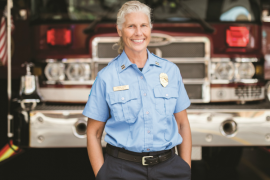By Jessica Steinhoff
Much like learning to read, cultivating financial literacy takes focus, practice and patience. This type of literacy is crucial for building healthy financial habits and making wise decisions about when and how to save, spend and invest.
For many families, a lack of confidence is the biggest barrier to teaching this skill set. Parents often feel apprehensive if they’ve struggled with credit card debt, budgeting or other aspects of money management.
According to Kristen Ruhl, program director for SecureFutures, a Wisconsin-based nonprofit providing financial education and mentoring for teens, these struggles produce some of the most valuable lessons kids can learn about financial decisions.
“Be vulnerable about your own journey with money,” she says. “Think back on what your mistakes have taught you and pass that knowledge on.”
This includes sharing which decisions didn’t lead to the desired outcome, why this happened and what you wish you had done differently. Another crucial task involves modeling how to put financial concepts into action.
MODELING HEALTHY FINANCIAL BEHAVIORS
Kristen Holt, president and CEO of the nonprofit GreenPath Financial Wellness, will never forget her parents’ financial mantra: “When you earn money, you save half.”
This concept — routing a percentage of each paycheck directly to your savings account or piggy bank — is something financial educators call “paying yourself first.” In addition to modeling it, Holt’s parents helped her find kid-size opportunities to practice it.
“From the moment I had my first job walking dogs in the neighborhood, I had to save half of everything I earned,” she explained in a recent panel discussion.
Holt uses this strategy with her own daughters, emphasizing its benefits while recognizing its potential pitfalls. If those potential pitfalls turn into actual problems, Holt models how to problem-solve.
For instance, Holt noticed that her kids were starting to view their bank accounts as “where birthday money goes to die.” On the rare occasion they’d receive a $20 bill rather than a bank deposit, they’d hoard it.
Exploring other types of bank accounts has been part of the solution. Holt’s older daughter opened a checking account that comes with an ATM card. When the funds are a little more accessible, the money feels more real and she feels more financially independent. And if she makes mistakes with this money, her parents are there to help her course-correct.
LEARNING FROM MISTAKES TOGETHER
SecureFutures’ Ruhl says letting children make money mistakes when they’re young is wise because the stakes tend to be low.
“Learning is a process, and mistakes are effective ways to learn a lesson,” she says. “It’s important that teens know that it’s okay to make a money mistake and that it happens to everyone, even the most financially successful people.”
Deciding which parts of your own financial upbringing you’d like to replicate and which you’d like to approach differently is also key.
GreenPath’s Holt realized that her parents’ approach to financial education didn’t teach her enough about the value of money.
“My parents were very focused on saving, but they didn’t really help me understand how much things cost,” she says. “For example, I never knew how much our house was worth or what the mortgage payments were.”
Holt strives to give her daughters a clearer picture of the family’s finances to illustrate that housing is one of many expenses a family must contend with each month and that planning for these expenses is an important facet of financial health.
BEING TRANSPARENT ABOUT FAMILY FINANCES
Holt is one of many experts who recommend that parents let their kids glimpse the household budget and the decision-making involved in paying the bills and saving for major expenses. Deciding how transparent to be is tricky, though, and it’s normal to want to shield your children from the stress of providing for their needs.
Exploring resources together is another way families can bond over financial literacy topics. SecureFutures offers free Money Sense on Demand modules (financialfitness.center/classroom/securefutures) that help students and families develop money smarts, while GreenPath produces a “Real Stories” podcast that shares how real people — including kids and their families — build healthy financial habits.
No matter where your family starts its financial literacy adventure, leveraging your kids’ interests and motivations can go a long way.
“Follow their lead and it will feel less like a lecture and more like a journey,” Ruhl says.




